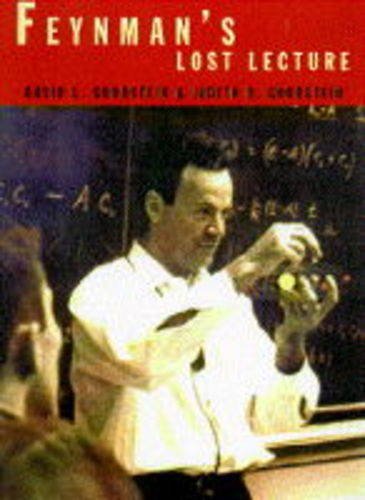Richard Feynman's fame rests to a large extent on his picaresque exploits, but he was also a theoretical physicist of some significance. The discovery of the notes for his major lecture on the motion of planets around the sun, presented in this book, allows readers an insight into the workings of his mind. The book relates how the notes came to be lost, and how they came to be found again and reconstructed. The lecture concerns the fact that, when a planet or any other body arcs through space under the influence of gravity, it traces out a specific set of mathematical curves. Feynman considers why nature chooses to trace out in the sky those - and only those - elegant geometrical constructions.
Richard Feynman, the rock star of theoretical physics, has left an image that belies the nerdy side revealed in
Feynman's Lost Lecture: The Motion of Planets Around the Sun. Not many bongo-playing surfer beatniks would have spent hours of their spare time proving Newton's law of elliptical planetary motion using only plane geometry, but
Feynman's Lost Lecture shows that the great man did just that. Originally delivered to an introductory physics class at Caltech in 1963, this book contains everything the maths-savvy listener needs to savour the pleasures of applied maths. Caltech physicist David L Goodstein and archivist Judith R Goodstein found the notes and tape amid another professor's papers and set to work making sense of them; unfortunately photographs of the blackboard drawings didn't survive. The book briefly covers their find and recovery work, then presents the proof as reconstructed--crucial reading if one is to follow the lecture. There's nothing easy about it, as Feynman acknowledges in the lecture:
I am going to give what I will call and elementary demonstration. "Elementary" means that very little is required to know ahead of time in order to understand it, except to have an infinite amount of intelligence.
He means, instead, that he is strictly using geometrical methods to reach his destination, which explains why it was so difficult to reconstruct without his diagrams. His charming Brooklyn accent and good humour show through in this lecture, even if the material is quite a bit drier than his fans might expect. Still, those interested in adding a new dimension to their understanding of this unquestionably brilliant scientist--and those with a deep interest in Newtonian physics--will find
The Motion of Planets Around the Sun a rare and unexpected treat. --
Rob Lightner